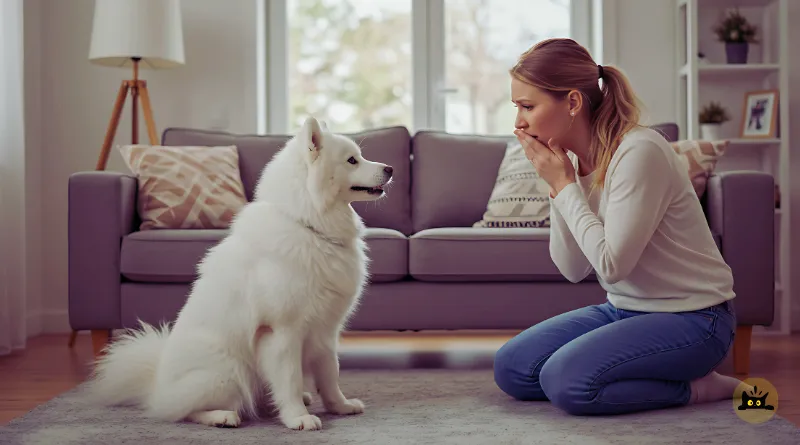Isn’t it fun when your dog comes over to show you affection? However, if your dog’s mouth smells, this closeness becomes more of a discomfort than a pleasure. Often seen as a harmless condition, bad breath in dogs can actually be a precursor to deeper health problems that should not be ignored. Fortunately, understanding this issue and managing it with the right steps is entirely in your hands. This guide has been prepared to help you understand why your dog’s breath smells bad and to provide them with a healthier mouth. Our goal is to ensure they lead a happier life. Remember, fresh breath is the first step to a healthy smile.
The Real Reasons: Why Does Bad Breath in Dogs Occur?
Many dog owners tend to accept the problem of bad breath in dogs as normal. However, this odor is often one of the most obvious signs that something is wrong. The most common culprit causing the bad odor is bacterial plaque that builds up on the teeth and gums. This condition is a precursor to periodontal disease (related to the gums and supporting tissues around the teeth), which can lead to serious consequences if left untreated.
The Threat of Periodontal Disease
The biggest problem in the mouth is known as periodontal disease (an infection affecting the tooth and gum structures). This process begins with food particles and bacteria accumulating on the tooth surface to form plaque. Uncleaned plaque hardens over time into tartar (calculus). Tartar leads to inflammation of the gums (gingivitis), which becomes the primary source of the problem of bad breath in dogs. If not treated, this infection can cause tooth loss and damage to the jawbone. In advanced stages, it can cause bacteria to enter the bloodstream, affecting vital organs such as the heart, kidneys, and liver. It is estimated that more than 80% of dogs over the age of three have some degree of periodontal disease.
The Impact of Physical Traits
The physical structure of some dogs can make them more prone to dental problems. For example, brachycephalic (short-nosed) breeds, such as Pugs or Bulldogs, have teeth that are crowded in their mouths. This situation causes food particles to accumulate more easily between the teeth and makes cleaning difficult, thereby increasing the risk of bad breath in dogs. Similarly, because the teeth of small breed dogs are larger and closer together relative to their body size, tartar forms more easily.
Temperament and Ease of Care
Your dog’s character determines how easily you can perform oral care. A calm and cooperative dog may more readily accept procedures like tooth brushing. However, for a dog with an anxious or stubborn temperament, this process can be more challenging. In this case, turning tooth brushing into a fun game with some rewards will help you get faster results. Remember that oral care is the most effective way to permanently prevent bad breath in dogs.
Health Warnings: What Symptoms to Look For?
bad breath in dogs is not the only symptom of tooth and gum diseases. Recognizing these signs early helps to get the problem under control before it escalates:
- Red, swollen, or bleeding gums
- Yellow or brown tartar buildup on teeth
- Pawing at the mouth or rubbing the face on objects
- Difficulty chewing, dropping food, or chewing on one side
- Increased drooling (sometimes bloody)
- Loss of appetite or weight loss
If you notice any of these symptoms, you should consult your veterinarian without delay.
Basic Care and Enrichment Methods
Just as professional veterinary support is important, the regular care you provide at home is equally valuable. Your most effective weapon in combating bad breath in dogs is a consistent care routine.
Basic Home Care Requirements
Just as with us, the most effective way to maintain dental health in dogs is regular brushing. Ideally, this should be done every day. Use a toothpaste and toothbrush specifically designed for dogs. Human toothpastes contain substances that can be toxic (poisonous, harmful, having a negative effect on health) to dogs. Gradually introduce your dog to this new routine. Start by touching their gums with your finger, then let them get used to the taste of the toothpaste, and finally, introduce the brush.
Mental and Physical Enrichment: Toys for Oral Health
Protecting your dog’s oral health is as important as supporting their mental and physical well-being. Special dental foods, chew toys, and reward biscuits approved by your veterinarian, which help reduce plaque and tartar, are very effective in this regard. These products help clean plaque from the teeth during chewing. They keep the problem of bad breath in dogs under control.
What Should You Do? A Step-by-Step Solution Plan
If bad breath in dogs is noticed, the following steps should be taken without panic:
- Consult Your Veterinarian: This is the most important step. Your veterinarian will conduct a comprehensive oral examination to determine the underlying cause of the odor.
- Be Prepared for a Professional Cleaning: If your veterinarian diagnoses periodontal disease, they will recommend a professional dental cleaning under anesthesia. This procedure ensures the removal of all tartar and plaque from the visible surfaces of the teeth and below the gumline.
- Create a Home Care Plan: Following the professional cleaning, establish a regular home care routine based on your veterinarian’s recommendations. This routine is the key to preventing the recurrence of the problem of bad breath in dogs.
In conclusion, bad breath in dogs is not just a simple hygiene issue but an important indicator of overall health. Being greeted with fresh breath when you embrace them lovingly will be the most beautiful reward for the care and affection you show them.
Sources : Morris Animal Foundation, Merck Veterinary Manual, American Animal Hospital Association
You might also like another post in this category: Proven Tips to Beat Dog Obesity

